You don’t have any thyme at home? Or you simply prefer another alternative? I have the best thyme substitutes for you! A lot of similar herbs that you can use instead of thyme.
Thyme belongs to the mint family, indigenous to the Mediterranean region. It is a lovely, evergreen, and mildly aromatic herb used for medicine and culinary purposes as well. Thyme has been used since ancient times.
The Egyptians used it for embalming, the Greeks for baths, and they believed it enhanced courage. The Romans helped thyme spread all over Europe, and they used it for cleaning rooms and the air in their homes, as well as seasoning liqueurs and cheeses.
Nowadays, there are over 350 wild-growing varieties of thyme, with only 5–10 being used as a culinary ingredient. It is an amazing antioxidant and can help you remedy a sore throat or cough.
It’s a staple in many western foods, but you might not prefer the taste of it, or just can’t source it for your next cooking project. Either way, we’re here to help you with how to replace thyme in your meals, both with dried and fresh herbs.
It’s possible to use some thyme replacement?
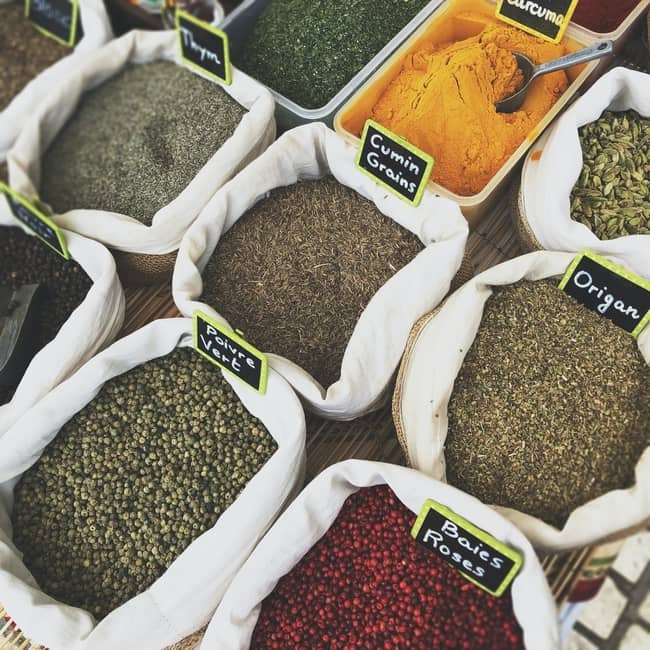
Like most herbs, you can buy fresh or dried thyme. No culinary professional would say that fresh herbs are always better. It depends on what you want to do with them. Some dishes call for dried, others for fresh herbs.
Thyme is easy to grow in your garden, or even on a sunny windowsill. You can make cooking easier by freezing fresh herbs after picking them. When frozen, they are good for months.
There are a lot of possibilities to use for thyme replacement. It has a slightly earthy flavor that suits many dishes perfectly.
For centuries, it has been used in most cuisines around the world, including Middle Eastern, Mediterranean, Italian, and French. Fresh and dried herbs do not have the same potency; to replace one tablespoon of fresh herb, add one teaspoon of dried herb.
What can you use instead of thyme? 13 Thyme substitutes

Thyme is most commonly used in the Mediterranean kitchen and adds flavor to vegetables, lamb, pork, fish, and eggs.
There are several fresh and dried spices and herbs that can be an amazing substitute for using thyme in meals, both in savory and sweet recipes. However, the amount needed from each substitute differs. The same amount of dried thyme and basil will not lead to the same strength of seasoning.
If you want to substitute thyme in a classic bouquet garni (fresh herb sprigs tied together), you shouldn’t substitute it with basil, only marjoram, savory, or oregano.
1) Basil
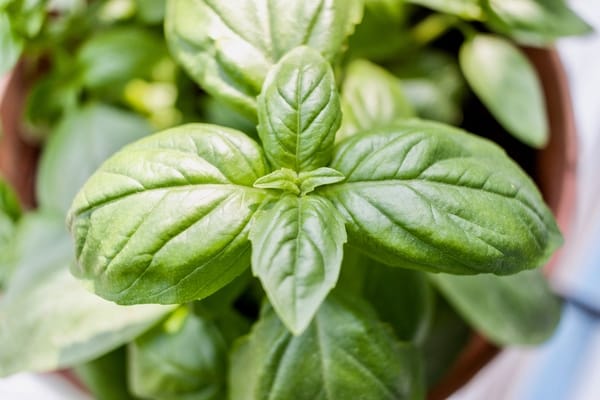
Basil is fragrant and one of the most commonly used spices in the world. It belongs to the same family of herbs as thyme, and they are interchangeable in most dishes.
If you switch fresh thyme for fresh basil, you will only need half the amount, and equal amounts to substitute dried thyme in a recipe.
You need the same quantity of dried basil to replace fresh thyme, while you need to add double the amount of dried basil to substitute dried thyme.
Fresh basil has accentuated licorice undertones and is best used to replace dried thyme in dishes. While basil tastes somewhat muted and balmy, it is one of the most popular seasonings for a very good reason; it gives a distinctive sweet taste to unforgettable dishes.
Basil is amazing to replace thyme in tomato-based, nutty, herby, green, and pasta dishes. You can switch thyme for basil in most Vietnamese, Indonesian, Italian, and Thai dishes.
2) Oregano

Fresh oregano can be an appropriate substitute for fresh thyme, and you need the same amount of both of them.
The ratio is the same for dried thyme as for dried oregano.
However, you ought to use twice as much fresh oregano as for the same amount of dried thyme. At the same time, you will need half the dried oregano for fresh thyme in any recipe. In most cases, dried spices are way stronger and undiluted compared to fresh sprigs.
Oregano resembles thyme as both have earthy, savory, and bitter tones, being herbal in taste with a spicy edge.
Be mindful of adding dried oregano carefully, because it is a powerful herb and can easily over-dominate any dish. You can counter too much oregano by adding mint and bay leaves with a few drops of plain white vinegar.
3) Savory
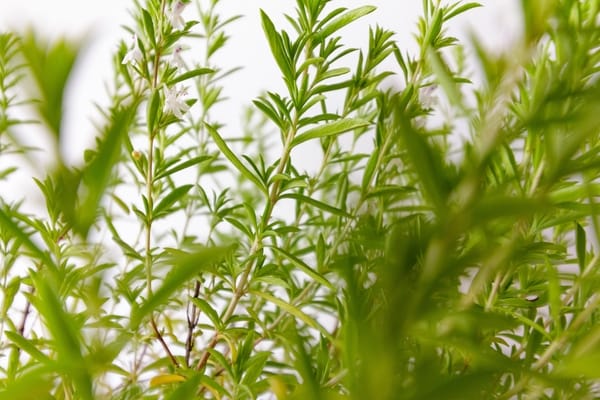
Savory belongs to the mint herb family, with a robustly meaty flavor. You need the same amount of fresh savory as you would for fresh thyme.
The same goes for the dried thyme-dried savory combination. However, for every dried thyme, double the amount of fresh savory, and half the amount of dried savory to replace fresh time.
4) Tarragon
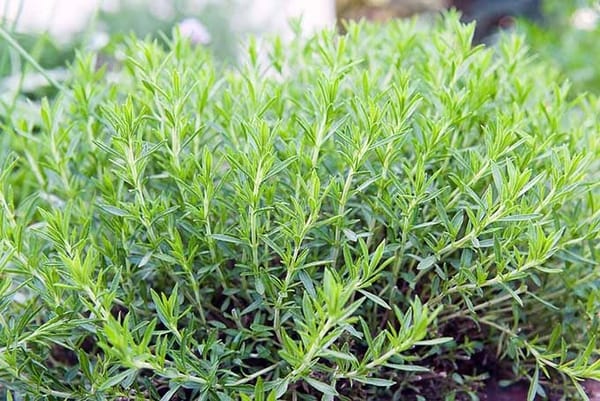
Tarragon is way sweeter with a bitter undertone, with anise notes, and is perfectly interchangeable with thyme, one on one. It’s best to switch thyme to tarragon when preparing fish or chicken.
Tarragon has a much bolder aroma and is considered very similar in taste to thyme.
5) Parsley
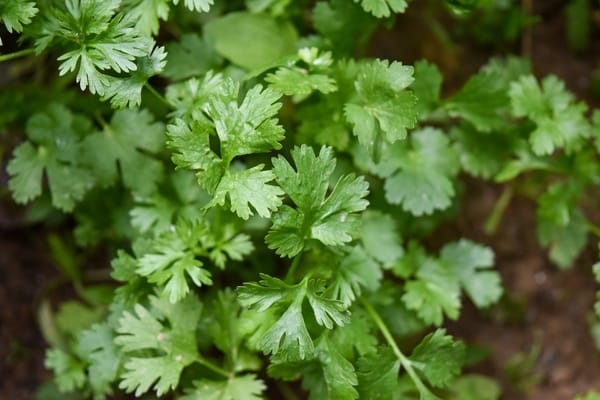
The parsley works best when substituting thyme by adding other herbs, specifically marjoram. Parsley is fresh, mild in flavor, not overpowering, variable, and can give a great base to further laxer it with other ingredients.
By adding marjoram to it, it becomes quite powerful. The parsley is great to change up thyme in salads, mild meat, lighter fish, and creamy meals, also adding some bright green color to it.
6) Marjoram
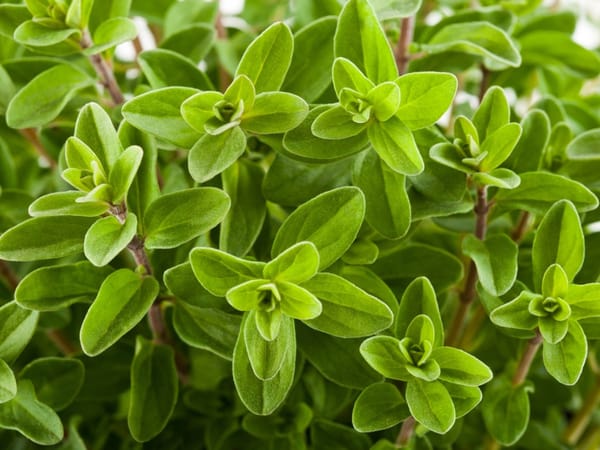
Marjoram is quite similar to oregano, with minty, woody tones, great to replace thyme, both in dried or fresh form. It has a distinctive, but subtle sweet and delicate herbiness, with a peppery undertone.
You can replace fresh thyme with the same amount of fresh marjoram. The same goes for dried marjoram and dried thyme. At the same time, you need half the dried marjoram to replace fresh thyme, and double the fresh marjoram for dry thyme.
7) Lemon Thyme
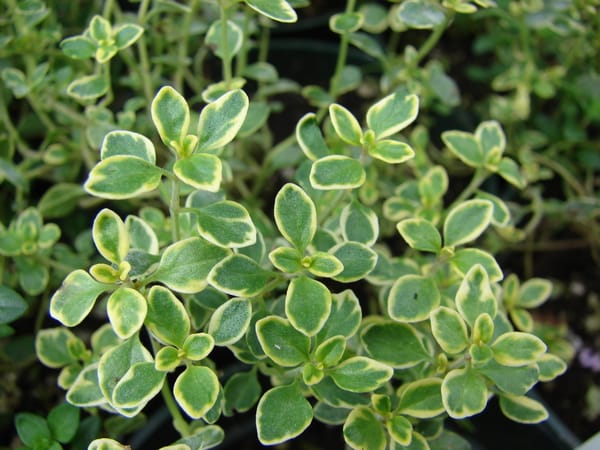
Lemon thyme is very distinct in flavor, but resembles the same earthy tones, with a bold citrus fragrance similar to lemon verbena.
It’s a perfect switch in sweet recipes, or to add something surprising to layer flavors. It’s not as strong as lemon, not as acidic, but it’s rich, delicate, and herby.
Lemon thyme is also used to cleanse our palates in between fine-dining tasting menus, either as a tea or as a bittersweet cracker. It’s great for tarts and ice creams.
8) Bay Leaf
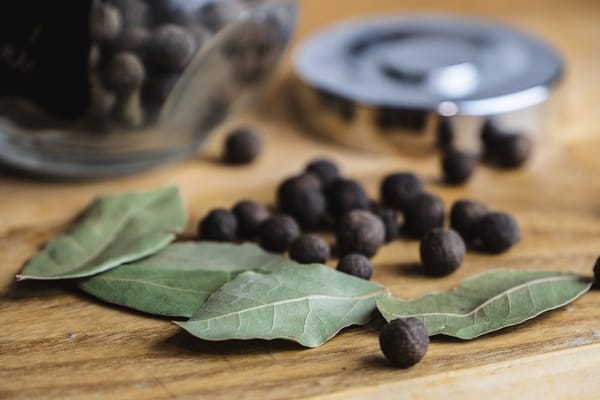
Bay leaf is predominantly used in soups and tomato dishes. You can completely swap thyme for bay leaf in onion soups, especially paired with oregano or Herbs the Provence.
9) Sage
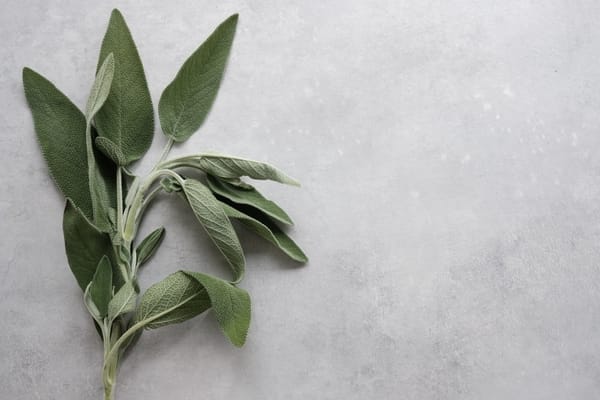
Thyme and sage are frequently used together, and enhance each other. They are both frequently used in Italian seasoning. Sage has a slightly fresher and piney tone.
10) Thymol Seeds
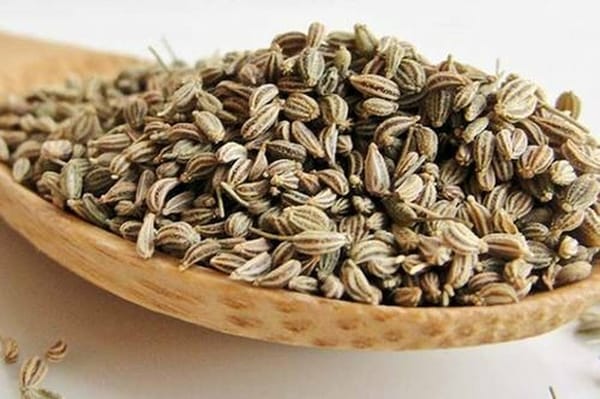
Thymol is a brown fruit resembling seeds, also known as carom, or ajwain, and is bitter in tone. It is one of the best substitutes for thyme, as they have exactly the same smell and both contain thymol, which gives Thyme its flavor. It is similarly blunt in taste, with a stronger aroma, bitter and fruity.
This seeds are from Egypt but it can be found in many places globally. Thymol seeds are present in Iranian, Pakistani, and Southeast Asian cuisines; these are good cues to find this in similar local shops. Be mindful that thymol seeds are avoidable if you’re breastfeeding or pregnant!
11) Fennel seeds
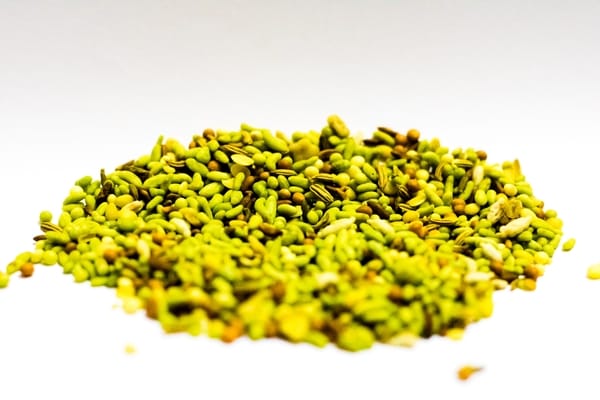
Fennel seeds are herby, sweet, and warm in dishes. They are best used to swap thyme in brussel sprouts, cabbages, carrots, zucchini, pumpkins, cucumber.
They are good to substitute thyme in most savory dishes in moderate amounts, especially when paired with white pepper.
12) Coriander
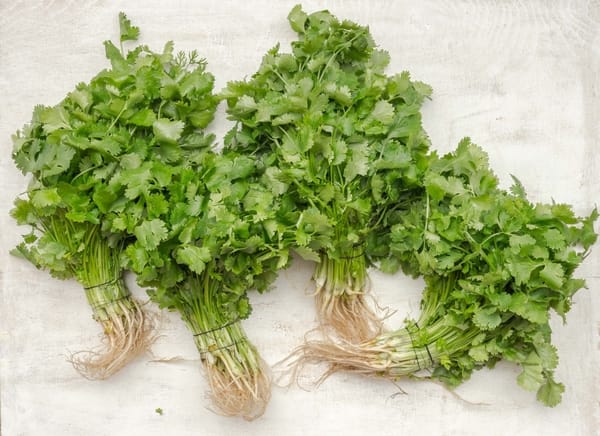
Coriander is slightly floral, peppery, with earthy undertones. It’s interchangeable with thyme in marinades, rubs, soups, onion dishes, curry, potato meals. Coriander seeds are sweeter and more citrusy.
Avoid toasting them when substituting thyme with them.
13) Dried Hyssop leaves

Hyssop leaves are most commonly used in Middle Eastern herb mixes, such as Za’atar. They are very aromatic, mildly bitter, and have minty undertones. Use them moderately, because they are intense in taste.
They are great to replace thyme in roasted veggies, caponata, or ratatouille. They perfectly substitute thyme by adding some mint to it in lamb dishes. By itself, you can swap thyme for potato and bean soups, cheese, meat plates, and meat sauces.
7 Substitutes for dried thyme
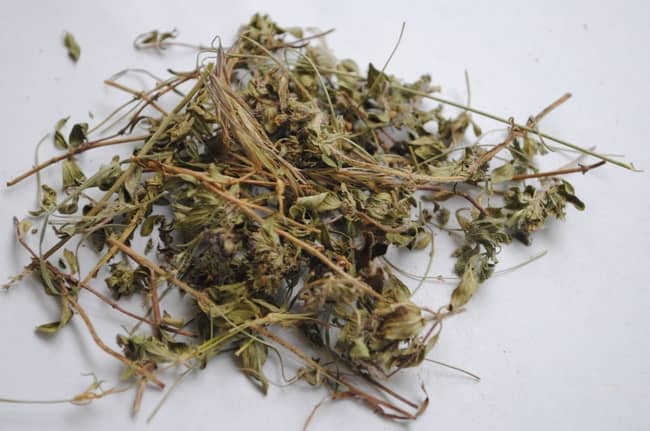
If you’re lacking dried thyme, here are some substitutes you can use. Thyme adds a distinct flavor that is hard to swap entirely. Use these condiments with a 1:1 ratio with dried thyme, but only half is needed as opposed to fresh thyme.
1) Poultry Seasoning
Complex poultry seasoning usually contains marjoram, nutmeg, rosemary, black pepper, and sage besides thyme- so it’s naturally great to replace dried thyme. It’s also true if you don’t like the taste of dried thyme because it’s not overpowering this way.
2) Herbes de Provance
Herbs de Provance is from France and consists of basil, parsley, marjoram, tarragon, rosemary, fennel seeds, thyme, lavender, and bay leaves.
You can find it in most supermarkets, and best to switch thyme in grilled meats, especially in beef and fish. Herbs de Provance is great when using high heat.
3) Italian Seasoning
Italian seasoning is a bold mix to substitute thyme and consists of marjoram, sage, oregano, basil, rosemary, and thyme. Most commonly used in Mediterranean cuisine, they are perfect to swap thyme in marinades, sauces, soups, pasta meals.
4) Dill
It’s best to switch up thyme to dill in potato, pork, shrimp, and creamy dishes, although dill is slightly bolder in taste, so use a bit less. It has a very distinct flavor that doesn’t necessarily match thyme, but in some meals, the overall flavor can be quite the same.
5) Rosemary
Mature thyme is very woody in taste, just like rosemary. The latter is stronger in taste, so use less of it.
Rosemary belongs to the same family of herbs as thyme, with similar tones. It’s best to interchange them in soups, broths, cauliflower dishes, but avoid swapping them in tomato-based meals.
They are also good to swap with lamb or pork, especially when adding something sweeter, like alcohol to the dish to caramelize the herb.
6) Za’atar
Za’atar is a spice mix that can be found in most supermarkets, but originating in the Middle East. It consists of dried oregano, marjoram, thyme, lemon sumac, salt, and sesame seeds, mostly white sesame.
If you replace thyme with za’atar, make sure not to add too much salt to the dish, as it already contains some.
What spice is more similar to thyme?

There are several herbs and spices that very much resemble thyme, such as rosemary, marjoram, dried basil, oregano, and sage.
They all add similar flavor notes to most dishes, and a depth of flavor to meaty, vegan, or vegetarian meals as well.
What flavor does thyme add to the food?
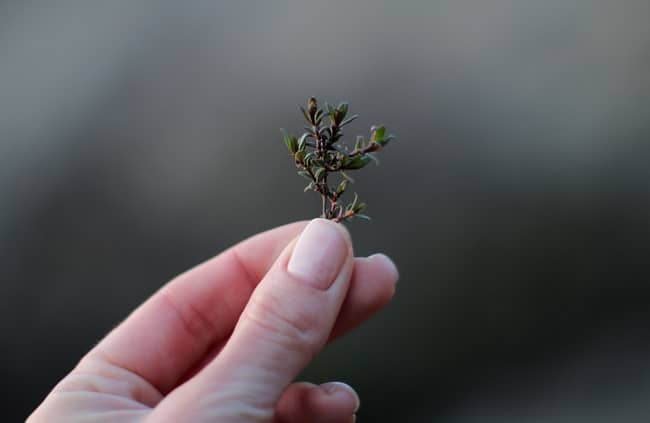
Thyme has a concentrated earthy, herby, woody, sharp grassy flavor with sweet, fruity undertones. It has green-greyish leaves.
Thyme adds a floral tanginess similar to lavender or rosemary. The more you cook thyme, the stronger the flavor becomes, adding more complex and warm touches to the dish.
Thyme is not too intense and is typically best used to complement steaks, mushrooms, poultry, vegetable dishes, especially root vegetables, and, in some cases, fine desserts.
It’s great to accentuate sweet dishes with their minty, floral, and citrusy notes, especially paired with these ingredients. It helps break up the sharp texture and flavor of lamb and pork.
What is the best substitute for thyme?
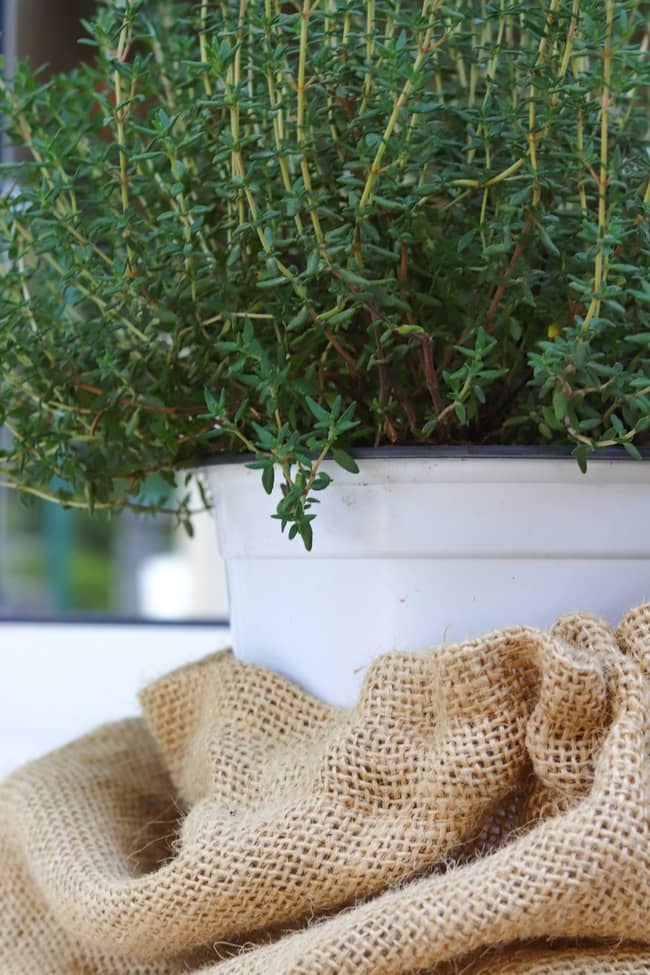
All in all, marjoram is considered the best substitute for thyme in most dishes; the only exceptions are sweets and desserts.
Marjoram has a lot of variabilities and enhances vegetables, fish, meat, and cheese exceptionally. It’s subtle but detectable and can withstand high heat, so it’s great to use in stews, broths, and soups. It encapsulates the woody undertones of thyme perfectly.
Final words
To choose the best replacement for thyme, it’s best to pinpoint which ones you want to replicate within a dish. This depends entirely on the type of cuisine and meal you want to create. You don’t need the same replacement in a sweet dish as in a stew.
There is a breathtaking variety of thyme substitutes for each and every meal, whether you just don’t like its taste, have run out of it, or simply want to spice up your regular dishes.
Thyme has been used by humanity since ancient times as an antiseptic and to cure ailments before antibiotics were a thing. It has a strong oil component. Its active ingredients are used in modern medicine as an antiseptic, killing bacteria, soothing coughing and skin infections, and inflammation.
So, do you like our substitutes for dried and fresh thyme? Please, feel free to leave your comments below!
Interesting articles:


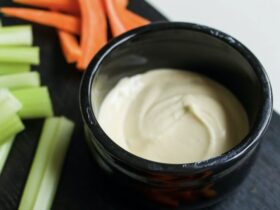


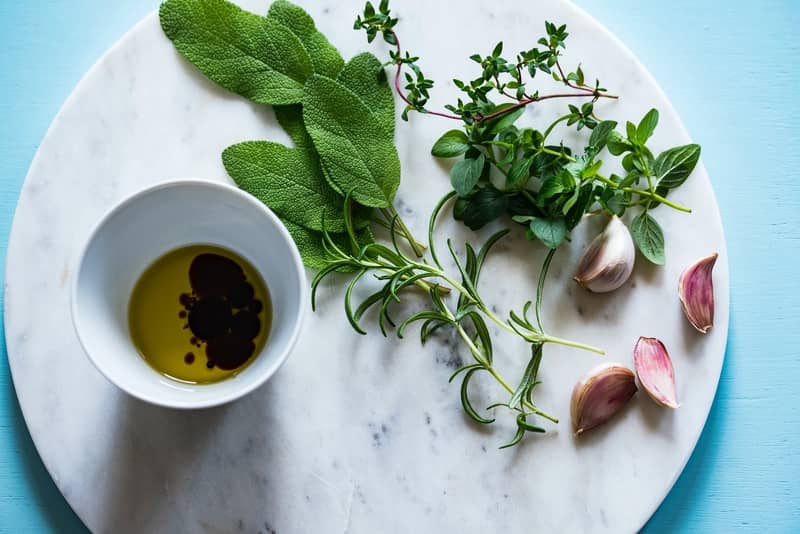






Leave a Reply